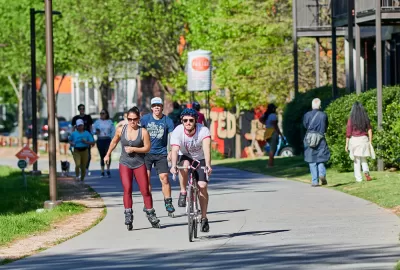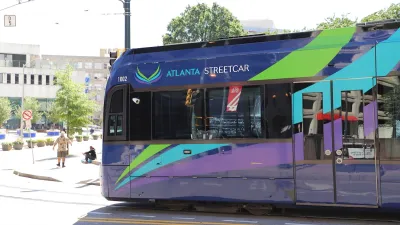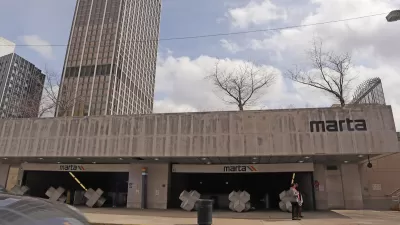Supporters of a proposed streetcar extension argue that Atlanta’s popular BeltLine corridor was always meant to include transit, making it more than just a recreational area.

More than two decades ago, an idea to repurpose an Atlanta rail corridor into a multi-use path, complete with a light rail line, was born at Georgia Tech. Now, a professor from that institution drew criticism from light rail supporters for a provocative op-ed calling the proposal to extend the Atlanta Streetcar to the BeltLine “a train wreck.” Writing in Urbanize Atlanta, Josh Green quotes portions of Professor Hans Klein’s editorial, countering them with responses from BeltLine Rail Now! (BRN), a group that supports the project.
In the op-ed, Klein writes, “Less-costly transit technologies and more useful radial routes are the basis of successful transit.” BRN’s response: “The BeltLine is the only place with existing dedicated space for transit to move unimpeded by cars, in its own right of way, and it would be a folly to not take advantage of that.”
Klein proposes that bus rapid transit (BRT), which MARTA is building elsewhere in Atlanta, “can provide all the functionality of light rail at a much lower cost and with nearer-term deployment.” BRN, meanwhile, argues that streetcars can serve more users thanks to their larger capacity, meaning a need for fewer trains that will disrupt pedestrian traffic at crossings. According to BRN, “The BeltLine is meant to be much more than a walking and biking trail. It has always been planned as a transit corridor.” Removing a transit option, BRN says, is an “ableist” move that would limit mobility for people unable to walk, bike, or scooter for long distances.
FULL STORY: Georgia Tech professor slams BeltLine rail idea; supporters fire back

Alabama: Trump Terminates Settlements for Black Communities Harmed By Raw Sewage
Trump deemed the landmark civil rights agreement “illegal DEI and environmental justice policy.”

Study: Maui’s Plan to Convert Vacation Rentals to Long-Term Housing Could Cause Nearly $1 Billion Economic Loss
The plan would reduce visitor accommodation by 25% resulting in 1,900 jobs lost.

Why Should We Subsidize Public Transportation?
Many public transit agencies face financial stress due to rising costs, declining fare revenue, and declining subsidies. Transit advocates must provide a strong business case for increasing public transit funding.

Paris Bike Boom Leads to Steep Drop in Air Pollution
The French city’s air quality has improved dramatically in the past 20 years, coinciding with a growth in cycling.

Why Housing Costs More to Build in California Than in Texas
Hard costs like labor and materials combined with ‘soft’ costs such as permitting make building in the San Francisco Bay Area almost three times as costly as in Texas cities.

San Diego County Sees a Rise in Urban Coyotes
San Diego County experiences a rise in urban coyotes, as sightings become prevalent throughout its urban neighbourhoods and surrounding areas.
Urban Design for Planners 1: Software Tools
This six-course series explores essential urban design concepts using open source software and equips planners with the tools they need to participate fully in the urban design process.
Planning for Universal Design
Learn the tools for implementing Universal Design in planning regulations.
Smith Gee Studio
Alamo Area Metropolitan Planning Organization
City of Santa Clarita
Institute for Housing and Urban Development Studies (IHS)
City of Grandview
Harvard GSD Executive Education
Toledo-Lucas County Plan Commissions
Salt Lake City
NYU Wagner Graduate School of Public Service





























